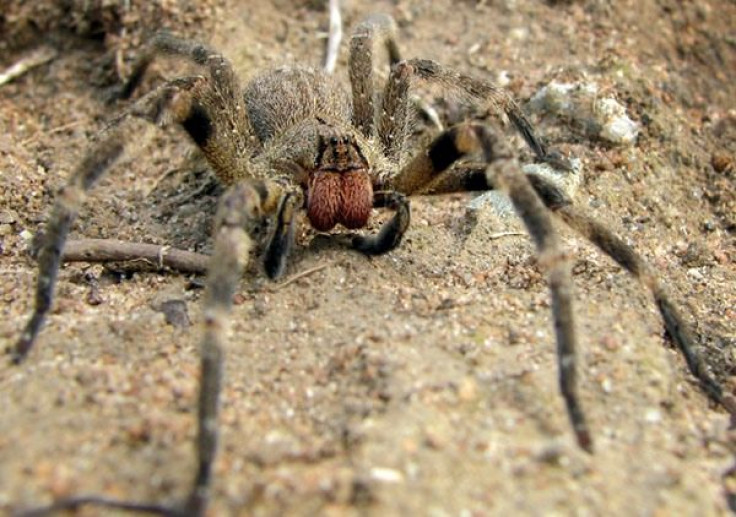Brazilian Wandering Spider Found On UK Supermarket Bananas

Consi Taylor, a 29-year old London woman, was startled to discover Brazilian wandering spiders on a bananan purchased in a UK supermarket. Taylor told The Sun she noticed a white spot on the banana she was eating, but thought nothing of it. She figured it was simply mold. After taking a closer look, though, she discovered dozens of small spiders crawling over the peel.
"They were hatching out on the table, scurrying around on my carpet," the mother of two told the newspaper. Having bought the fruit at Sainsbury’s, she took them back and received a £10 voucher in return. Yet, her misgivings continued, so she quickly sent a photo of the crawling spiders to a pest control company. Instead of easing her fears, the answer she received terrified her even more. The company told her she and her family should evacuate their home as it might be infested with Brazilian wandering spiders. The Sun reported that Sainsbury's has paid for the Taylor family to stay in a hotel while their home is fumigated of this aggressive and venomous insect.
Wandering, Webless Creatures
Native to tropical South America, "wandering" spiders are exactly that. Instead of building a web, they prefer to wander the jungle floor during the night while they mainly hide in mounds, under fallen logs and rocks, and in banana plants during the day. One species of the Phoneutria genus (to which this spider belongs) can be found in the Dominican Republic and Costa Rica. Seven other species reside in the Amazon as well as parts of Argentina, Colombia, Venezuela, the Guianas, Ecuador, Peru, Bolivia, Brazil, and Paraguay. They feed on other insects, frogs, small lizards, and even mice living in the rainforest.
Their venom contains a neurotoxin known as PhTx3. An anti-venom exists, so fatalities rarely occur. At deadly concentrations, though, PhTx3 can cause a loss of muscle control, breathing problems, paralysis, and asphyxiation. More toxic than the Black Widow, the venom of some species can easily kill a mouse with one bite.
Some species of this spiders can grow to have a leg span of nearly six inches. They are usually identified by their dark stripes, though it is their intimidating defensive posture that distinguishes some species. When protecting themselves, these spiders will lift their bodies into an erect position, holding their front pairs of legs high, and then they sway from side to side.
Although it does not happen often, these spiders have been unintentionally shipped via banana crate to distant locations. This is not the first time this spider has made an appearance in England. In Bridgwater, England during 2005, Wikipedia reports, a man was bitten by a wandering spider. Quick medical care saved his life, though it took nearly a week for him to recover.



























